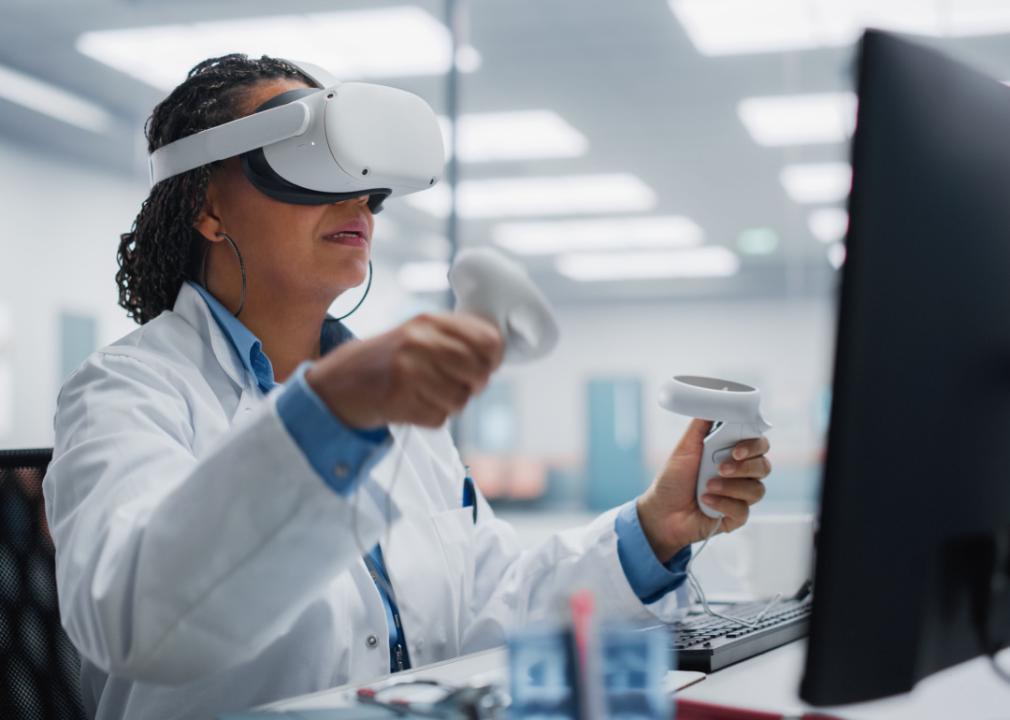4 ways technology has changed employee training

NDAB Creativity // Shutterstock
4 ways technology has changed employee training
Woman working with tablet in office.
Employee training is a costly endeavor but a crucial one. Companies that invest in employee development are twice as likely to retain their employees as organizations that don’t, according to Gallup. So employee training is a boost to workers and the health and longevity of the company as well. But the key isn’t how much they spend—it’s the effectiveness of the lessons.
According to a 2022 Association for Talent Development survey, organizations spend about $1,280 per employee on training and workplace education every year. Organizations are increasingly looking to technology to accelerate learning and reduce costs, helping to make tech-based training a big market. Statista forecasts that the global e-learning market will reach nearly $400 billion by 2026.
Bonsai identified several ways technology has made employee training faster and more effective, based on news and industry reports.
Integrating innovative training methods may also aid in increasing workforce engagement—and an engaged workforce is a more profitable one. According to a 2018 Gallup study on employee engagement, organizations that do best at keeping employees connected to their work achieve four times more earnings-per-share growth. But most importantly, prioritizing employee training can help companies ensure their workforces remain agile and equipped to keep pace with the rapidly evolving digital age.
Continue reading to learn about the impact technology has had on training in the workplace
![]()

Jacob Lund // Shutterstock
Assessments and tracking progress
Two coworkers behind desk looking at computer.
Employee assessments do more than serve as benchmarks and guideposts for an employee’s learning objectives. They also provide insight into the effectiveness of an organization’s training programs. This information can help company leaders determine what skills need improvement across the firm’s workforce.
Integrating technology into the assessment process enables quicker or even real-time feedback. It also provides a platform for trainers and trainees to gain a broader view of learning objectives and progress. Virtual assessment tools also facilitate continuous learning, allowing employees to pick up their training from any location.

Ground Picture // Shutterstock
Videos and tutorials
Person participating in training tutorial online.
Videos and tutorials can be a cost-effective method of employee training because they can be created once and used repeatedly. They also allow companies with multiple locations to standardize their training and achieve a unified understanding of company policies and procedures across sites.
Because videos and tutorials allow employees to review concepts at their own pace, workers can fully master them before moving to the next lesson. These records of methods and practices also prevent the loss of knowledge upon employee departure. Organizations have embraced these benefits.
Virtual training expert Cindy Huggett surveyed over 700 people from July to October 2021 for her annual “State of Virtual Training Survey“—91% of respondents reported that virtual training increased at their organizations in the two years leading up to the survey.

Prostock-studio // Shutterstock
Personalized training and pacing
Smiling woman working at desk with laptop.
The integration of adaptive learning systems and learning management systems into employee training platforms has enabled more personalized learning and pacing. These systems can automatically adjust the difficulty and speed of training depending on the user’s needs and performance.
The effectiveness and applicability of personalized learning to all industries is reflected in its market growth: IndustryArc reports that the global personalized learning market is expected to exceed $2 billion by 2024. Artificial intelligence tools can track progress and offer personalized recommendations on further courses, depending on users’ skill needs and learning styles.

Gorodenkoff // Shutterstock
Simulations
Surgeon using VR headset to train.
Interactive simulations can provide employees with realistic environments to practice their job skills, which is especially useful for, and is gaining traction in, high-stakes fields such as health care professions. More advanced augmented-reality technologies can be used on the job to provide real-time guidance during work, allowing ongoing learning and reinforcement of key lessons.
These tools may also allow supervisory employees to monitor and assist workers more efficiently. Some simulators have features that make training feel more like a game, such as rewards and progress tracking, linked with increased user engagement.
Story editing by Jeff Inglis. Copy editing by Kristen Wegrzyn.
This story originally appeared on Bonsai and was produced and
distributed in partnership with Stacker Studio.